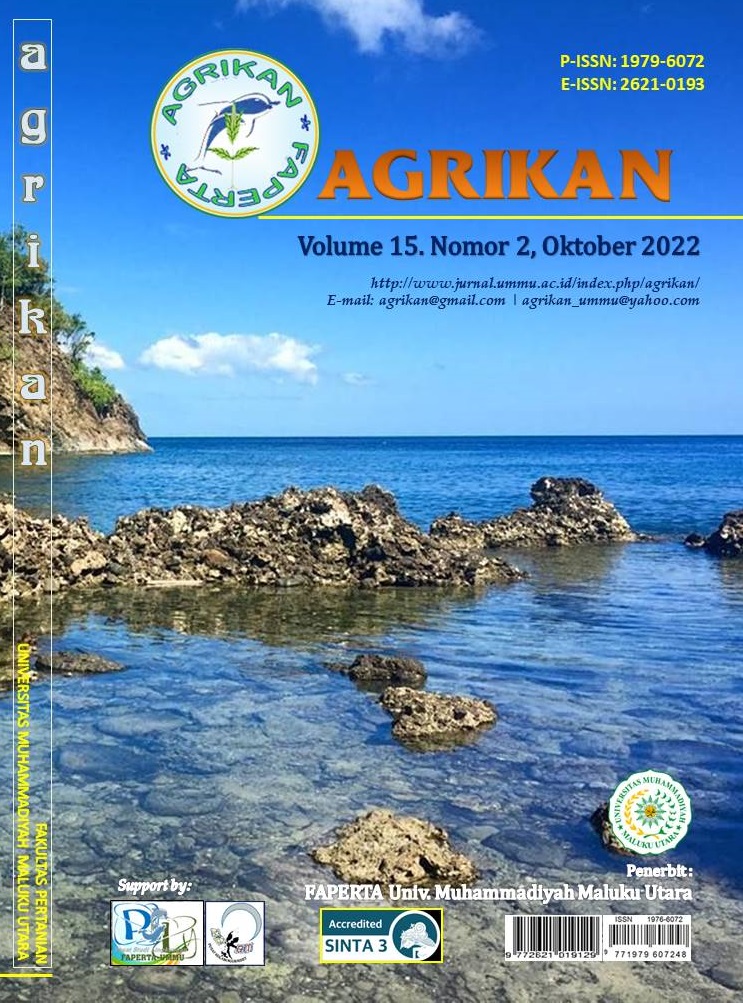Evaluation of Sustainability Large Pelagic Fisheries In Morotai Island District
DOI:
https://doi.org/10.52046/agrikan.v15i2.1402Keywords:
RAPFISH, Large Pelagic, MorotaiAbstract
This study aims to measure and determine the sustainability status of large pelagic fisheries in a sustainability perspective according to ecological, economic, social, technological, and legal/institutional dimensions in Morotai Island District. The method used in this study is a survey method and quantitative descriptive with analytical tools, namely RAPFISH analysis. Based on the analysis, the sustainability of the ecological and legal and institutional dimensions of large pelagic fisheries has a moderately sustainable status (range 50-75), with an average sustainability index value of 55.79. The economic, social and technological dimensions have a less sustainable status (range 25-50), while the legal and institutional dimensions have a good sustainability status (range 75-100) and the ecological dimension has a fairly sustainable status (range 50-75). The attributes that have the most influence (sensitive) on the sustainability status of large pelagic fisheries based on the five dimensions above are the level of collapse and pre-maturity of catch (ecology), employment and other income (economy), new entrants to fisheries and family participation (social). , is an attribute of pre-sale processing and use of FAD'S (technology), and illegal fishing and the availability of law enforcement personnel (legal and institutional).
Downloads
Published
Issue
Section
License
Copyright (c) 2022 Rommy M. Abdullah, Imran Taeran, Irham Irham, Kusdi H. Iksan

This work is licensed under a Creative Commons Attribution 4.0 International License.

This work is licensed under a Creative Commons Attribution 4.0 International License.













